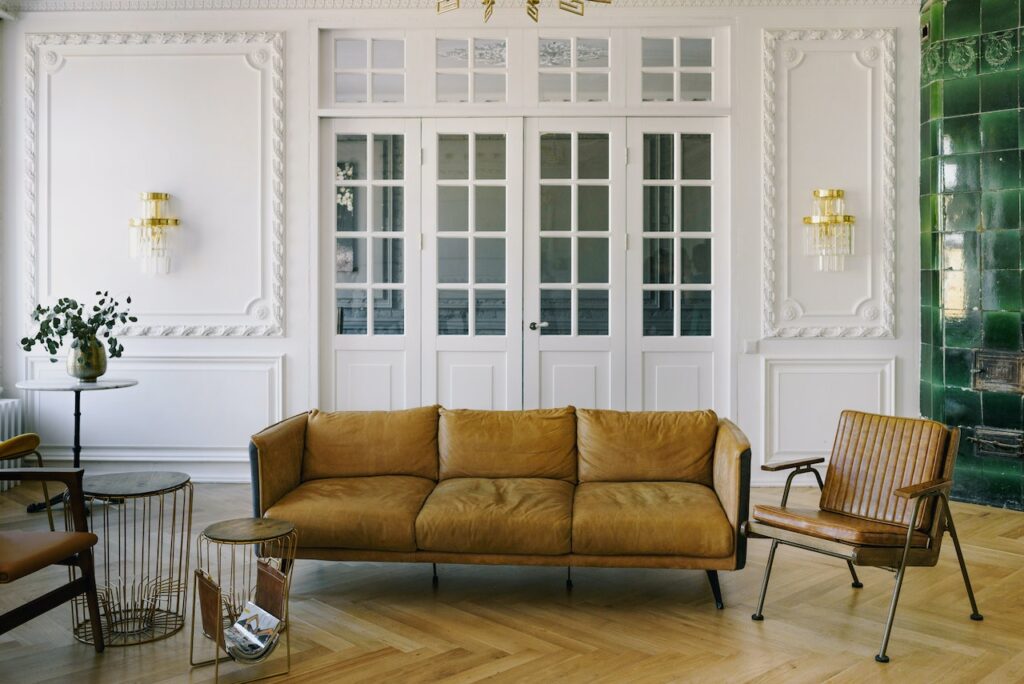Practical Interior Design Tips For Small Spaces

Everyone who is even somewhat interested in interior design is on the hunt for a solution to the age-old problem of how to give the impression that the space is bigger than it is.
Ideas for tiny rooms can be restricted in terms of square footage, but that doesn’t mean they must be restricted in design. The following are some ideas for small rooms and some tricks of the trade that will assist you in transforming that uncomfortable and cramped space into something chic and elegant.
Planning and Organisation
When decorating a small room, careful planning is necessary. The first thing you must do is determine what the room will be utilised for and evaluate whether or not that concept is feasible. You can create a floor plan and design that makes the most of the available space and functions as soon as you have these details.
You will want to ensure that the floor is maintained and clutter-free as possible, that you only use furniture and accessories proportionate to the area and that every design component has a function. Shelving, cabinets, and other built-in or freestanding storage solutions are excellent tools for maintaining an orderly and well-kept appearance within the home.
Colour and Lighting
Using light and bright hues to give the appearance of space is a terrific method to make a room seem larger than it is. This may be accomplished by painting the walls in a light natural shade. You may also add splashes of colour around the space to have a less clinical vibe and more individuality. This can be accomplished by using paint or wall decals.
In addition to adding paintings and wall elements, you can add layered light sources throughout the rooms. This helps create depth and improves your mood as soon as you enter the door. If there are windows in the space, you should make the most of the available natural light. Add shades to the window to add decoration instead of cluttering it up with ornaments and utilise window treatments to increase your seclusion while doing so simultaneously.
Visual Tricks and Illusions
The use of deception is the most effective strategy for giving the impression that a space is much larger than it is. It is helpful to experiment with different scales and proportions. Mirrors and other reflecting surfaces are excellent tools for this purpose since they magnify available light and help create the illusion of depth.
Incorporating vertical items into a space, such as drapes, artwork, and shelves, directs the viewer’s gaze upward and provides the illusion of height. In addition, to give a sense of airiness and lightness, you should choose furniture with legs and open bottoms.
Making the Most of Every Inch
Making the most of every square foot is crucial no matter what you do in your little area, be it crafts and hobbies, scrolling through online slots UK, working out at home, watching films or anything else. You may design a tiny place that serves your requirements in both form and function by making strategic use of the space you have.
There are many ways to use every inch of the room, such as incorporating multi-functional furniture such as sofa beds and storage ottomans if you use the space for a bedroom. If the space is a kitchen or bathroom, small-scale and compact appliances will help you save space and optimise the room. For spaces used as a dining area or living room, you can incorporate foldable or retractable elements such as tables, chairs and screens to help maximise flexibility and adaptability.
Conclusion
As you can see, a tiny room does not necessarily have to be gloomy and depressing; instead, you can utilise some of these interior design ideas and techniques to make the area more appealing and beautiful.
You should make an effort to be creative and resourceful, and you should also be prepared to experiment. If you do these things, you will find the project pleasurable, resulting in an elegant and chic room.